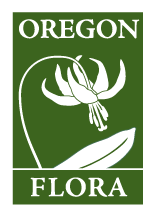A saga of homesteading, legal inequities, archaeological digs, and botanical resources is unfolding in the Soap Creek Valley, 12 miles north of the Oregon State University (OSU) Corvallis campus. Land now managed as the OSU Beef Ranch was once the site of the Letitia Carson Homestead. Letitia, a formerly enslaved Black woman born in Kentucky, came to Oregon in 1845 with David Carson, an Irish emigrant and her presumed life partner. Their family settled on a 320 acre homestead claim in Soap Creek. After David's death in 1852 and in the absence of a will, neighbor Greenberry Smith was named administrator of their estate. Letitia's homestead, cattle, and property were seized and sold because Smith deemed the mixed-race couple was not legally married. In 1854 and 1855, Letitia Carson filed two lawsuits to reclaim her losses; though the courts awarded only a portion of her due compensation, Letitia's success in both suits was astonishing for the time. Letitia went on to successfully file a homestead claim for 154 acres in Douglas County-most likely the first claim in Oregon made by a Black woman.
The cultural history of the Letitia Carson Homestead is made all the richer when we consider the area's natural history. During Summer 2023, botanical surveys made by author Dennis Albert along Soap Creek within the OSU Beef Ranch and further to the west where the Beef Ranch meets OSU's Dunn Forest provide a rare glimpse into the botanical and ecological past of this special place.
When federal General Land Office surveyors mapped the region in 1852, they described a landscape still bearing the signature of centuries of fire management by the native Kalapuya peoples. Earlier, the botanist/explorer David Douglas described in his 1826 explorations of the Willamette Valley the open conditions as the result of frequent fires by the Kalapuya. Recent analysis of oak stumps documents that the fires recurred on an average of every 7 years, and tribal members indicated that fires improved habitat for hunting and the regeneration of food plants, including camas.
The 1852 surveyors mapped the area surrounding Soap Creek as prairie and, in the absence of trees, were forced to create permanent survey points with charred stakes surrounded by rocks. Scattered groves of Garry oak grew on the lower flanks of Forest Peak, and most of the peak itself was described as open oak opening or oak forest with scattered Douglas fir.
Situated next to Soap Creek, the Letitia Carson Homestead links the steep landscape of the Coast Range forest to the flat, poorly drained prairies flanking the rivers and creeks of the Willamette Valley. Traversing a quarter mile out from Soap Creek, the elevation rises gradually-60 to 100 feet over the first quarter mile- then rapidly another 600 feet over the same distance to the summit of Forest Peak to the west in Dunn Forest. During the spring months, the entire gently sloping area is broken by small rivulets and seeps.
In preparation for our 2023 botanical survey, the OregonFlora mapping tool was used to find all known plant occurrence records (herbarium specimens and unvouchered observations) from the area. While there are only 15 records representing 8 taxa (most were willows) collected along two miles of the Soap Creek channel and floodplain, there are almost 200 records along the oak slopes to the west, dating back to 1918. These early plant collections give us insights into the landscape of the prior century; they document the presence of a diverse oak savanna, remnants of which persist even though degraded by invasive species and planted pasture grasses.
Our surveys in mid-June 2023 documented large beds of blooming narrow-leaved mule's ears (Wyethia angustifolia), while equally abundant Tolmie's cat's ears (Calochortus tolmiei) were forming seed capsules. Other plants characteristic of oak savanna at the site include checkermallows (Sidalcea asprella ssp. virgata and S. campestris), Oregon sunshine (Eriophyllum lanatum), Kincaid's lupine (Lupinus oreganus), larkspur (Delphinium menziesii), slender cinquefoil (Potentilla gracilis), ookow (Dichelostemma congestum), and elegant brodiaea (Brodiaea elegans).
Camassia quamash and C. leichtlinii) poison larkspur (Delphinium trollifolium), Hooker's onion (Allium acuminatum), monkeyflower (Erythranthe guttata), common spikerush (Eleocharis palustris), and the typical wet prairie sedges Carex densa and C. athrostachya. Shrubs included osoberry (Oemleria cerasifolius), hardhack (Spiraea douglasii), Pacific ninebark (Physocarpus capitatus), oceanspray (Holodiscus discolor), shining Oregon grape (Berberis aquifolium), and snowberry (Symphoricarpos albus).
Of course, there were many weedy non-native species-about one-third of our observations-including the invasive reed canarygrass (Phalaris arundinacea), Himalayan blackberry (Rubus bifrons), thistles (Cirsium vulgare and C. arvensis), and tansy ragwort (Senecio jacobaea). These were especially common in the pasture and at cattle crossings along the creek.
What we learned from comparing our species list generated in our botanical surveys to the historical records obtained from the OregonFlora database was that, though decades of heavy grazing and planting of pasture grasses has degraded much of the prairie and savanna plant communities, portions of the flood plain remain dominated by the native flora, as does the upper flank of the oak savanna. There are promising opportunities to restore the original oak savanna and wet prairie habitats, possibly with a combination of controlled burn management and early spring grazing.
Learn more about the Letitia Carson Legacy Project and the associated 2023 archaeological work led by Cayla Hill here.
11 October 2023








